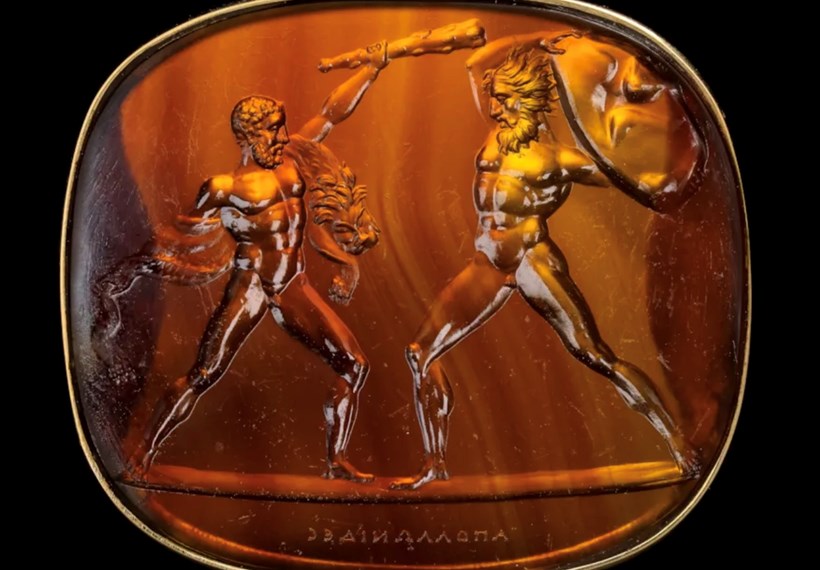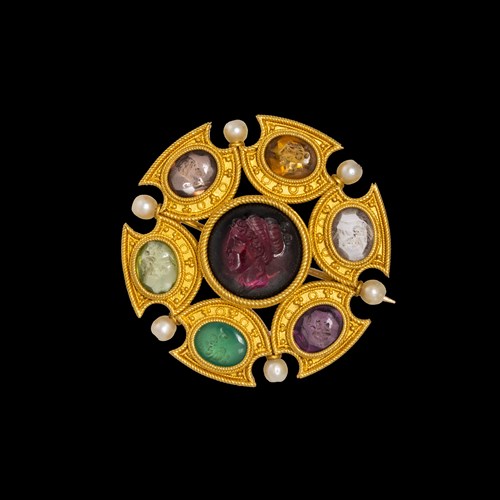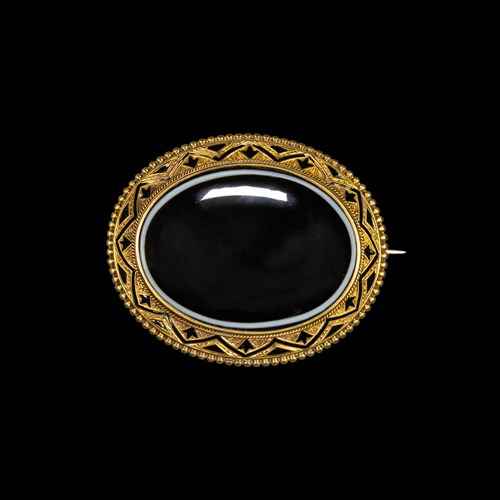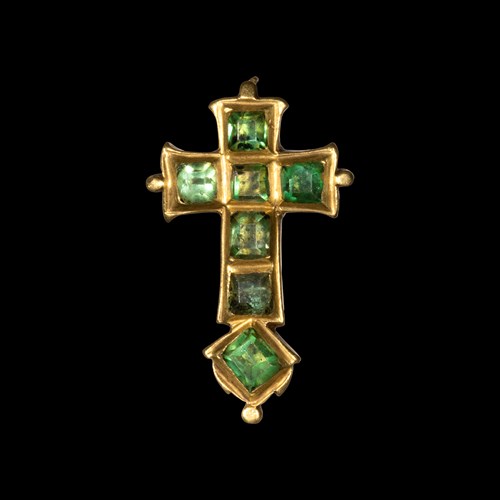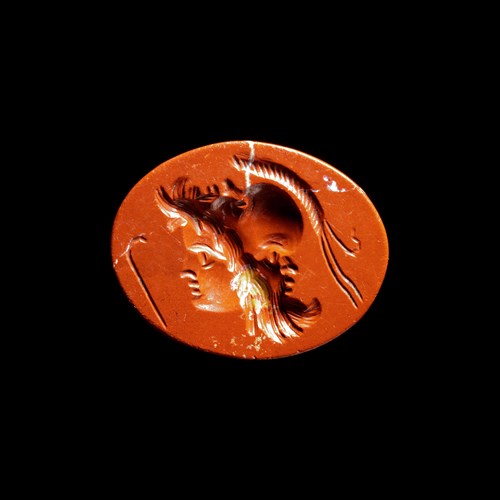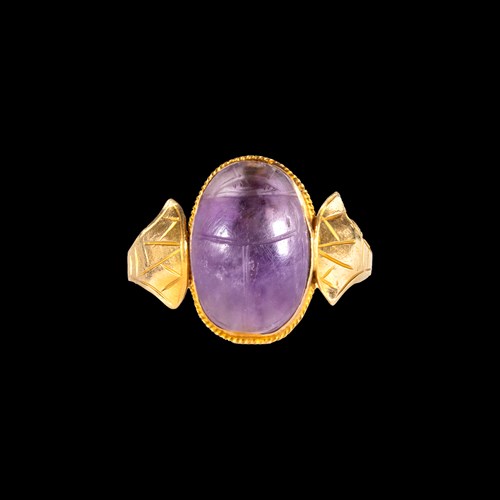Marketplace
Attributed to Carlo Costanzi (1705-1781). A gold ring with a Neoclassical carnelian intaglio. Leda and the swan.
Attributed to Carlo Costanzi (1705-1781). A gold ring with a Neoclassical carnelian intaglio. Leda and the swan.
Date Second half of the 18th century
Period Neoclassical
Origin London, STOCK
Medium gold, Carnelian
Dimension 1.5 x 1.9 cm (0⁵/₈ x 0³/₄ inches)
The scene immortalizes the divine embrace. Leda facing right, wearing a diadem, her body, partially reclined and seen from the back in three-quartes, as her left draped elbow is resting on a rock. The queen welcomes Jupiter in the guise of a swan between her legs, for divine procreation.
Style and composition details are very faithful to a carving by C. Costanzi (1705-1781), such that we can consider this work of the master himself.
Signs of wear on the stone and on the gold setting, decorated on each side with two spherical gold beads.
Comprandum
Paoletti Collection, vol. 2, volume VIII n. 407 (“Leda with Jupiter in the swan” described as a diamond carving by Carlo Costanzi with an inscription referring to him, from an amethyst carving, Vienna, KHM, inv. IX, B1274.
Legend tells that Zeus felt in love with Leda, and transformed himself into a swan to seduce her on the banks of the Eurotas river. Once he got her attention, he mated with her. Subsequently the woman laid an egg which hatched and let out her children Helen and Pollux. The same night she also bed down with her husband Tindaro. From this embrace she therefore became the mother of Castor and Clytemnestra. Leda was the queen of Sparta. The mythical episode takes on a prominent place in Ovid's extraordinary Metamorphoses.
Style and composition details are very faithful to a carving by C. Costanzi (1705-1781), such that we can consider this work of the master himself.
Signs of wear on the stone and on the gold setting, decorated on each side with two spherical gold beads.
Comprandum
Paoletti Collection, vol. 2, volume VIII n. 407 (“Leda with Jupiter in the swan” described as a diamond carving by Carlo Costanzi with an inscription referring to him, from an amethyst carving, Vienna, KHM, inv. IX, B1274.
Legend tells that Zeus felt in love with Leda, and transformed himself into a swan to seduce her on the banks of the Eurotas river. Once he got her attention, he mated with her. Subsequently the woman laid an egg which hatched and let out her children Helen and Pollux. The same night she also bed down with her husband Tindaro. From this embrace she therefore became the mother of Castor and Clytemnestra. Leda was the queen of Sparta. The mythical episode takes on a prominent place in Ovid's extraordinary Metamorphoses.
Date: Second half of the 18th century
Period: Neoclassical
Origin: London, STOCK
Medium: gold, Carnelian
Dimension: 1.5 x 1.9 cm (0⁵/₈ x 0³/₄ inches)
More artworks from the Gallery


. A gold ring with a Neoclassical carnelian intaglio. Leda and the swan_T638816790184582090.jpg?width=2000&height=2000&mode=max&scale=both&qlt=90)
